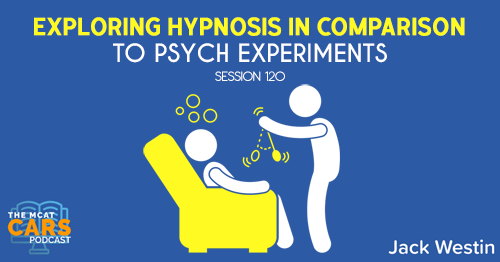Apple Podcasts | Google Podcasts

Session 05
As a lover of Horror, this passage was an interesting one to follow. The author talks about his history with horror and its impact on culture. Follow along!
Link to the full article: https://aeon.co/essays/horror-is-a-dark-and-piercing-reflection-of-our-anxious-times
In Ray Bradbury’s horror short story, ‘The Next in Line’ (1955), a woman visits the catacombs in Guanajuato, Mexico. Mummified bodies line the walls. Lying awake the next night, haunted by her macabre tour, she finds that her heart ‘was a bellows forever blowing upon a little coal of fear … an ingrown light which her inner eyes stared upon with unwanting fascination’.
Our present era is one in which the heart of culture is blowing hard upon a coal of fear, and the fascination is everywhere. By popular consent, horror has been experiencing what critics feel obliged to label a ‘golden age’. In terms of ticket sales, 2017 was the biggest year in the history of horror cinema, and in 2018, Hereditary and A Quiet Place have been record-breaking successes. In both the United States and the United Kingdom, sales of horror literature are up year over year – an uptick that industry folk partly attribute to the wild popularity of Netflix’s Stranger Things (2016-). And the success isn’t merely commercial. Traditionally a rather maligned genre, these days horror is basking in the glow of critical respectability. As The New York Times remarked this June, horror ‘has never been more bankable and celebrated than it is right now’.
As any historian of the genre will tell you, horror has had previous golden ages. Perhaps ours is just a random quirk of popular taste. But perhaps not. Perhaps we are intoxicated by horror today because the genre is serving a function that others aren’t. Can’t. Horror’s roots run deep, but they twist themselves into forms very modern. The imagination’s conversion of fear into art offers a dark and piercing mirror.
My earliest horror memory is Stay Out of the Basement (1992), one of R L Stine’s Goosebumps series of young adult novels. In the story, a botanist accidently creates a hybrid plant clone of himself. When the clone comes to life, he tries to steal his humanoid self’s life. The botanist’s children unmask the imposter, and in a mess of green blood and plant mush, the clone is felled with an axe. The rescued father disposes of the rest of the mutating plant matter, and the family is all set to live happily ever after. But at the very end, the daughter is standing in the garden and feels a small plant nudging her ankle. The plant whispers to her: ‘Please – help me. I’m your father.’ Stay Out of the Basement is no masterpiece, but I was young, and it struck me cold.
Horror is what anthropologists call biocultural. It is about fears we carry because we are primates with a certain evolved biology: the corruption of the flesh, the loss of our offspring. It is also about fears unique to our sociocultural moment: the potential danger of genetically modifying plants. The first type of fear is universal; the second is more flexible and contextual. Their cold currents meet where all great art does its work, down among the bottomless caves on the seabed of consciousness. Lurking here, a vision of myself paralysed in the dirt, invisible to those I love.
[02:26] Paragraph 1, Sentence 1-2:
In Ray Bradbury’s horror short story, ‘The Next in Line’ (1955), a woman visits the catacombs in Guanajuato, Mexico. Mummified bodies line the walls.
Jack says:
It’s laying a story of a woman visiting catacombs in Mexico with mummified bodies which makes sense.
[03:09] Paragraph 1, Sentence 3:
Lying awake the next night, haunted by her macabre tour, she finds that her heart ‘was a bellows forever blowing upon a little coal of fear … an ingrown light which her inner eyes stared upon with unwanting fascination’.
Jack says:
It sounds like what she experienced wasn’t good because she was haunted by the tour that she had that she was lying awake. So this woman is feeling scared. And it seems something crazy is going on. It just seems very scary, dark, and twisted
[05:40] Paragraph 1, Sentence 4:
Our present era is one in which the heart of culture is blowing hard upon a coal of fear, and the fascination is everywhere.
Jack says:
The author is bringing in elements of the story and trying to figuratively explain the current stage of horror. And the present era of horror is fascination. It’s scary and it fascinates us.
[06:32] Paragraph 1, Sentence 5:
By popular consent, horror has been experiencing what critics feel obliged to label a ‘golden age’.
Jack says:
What does golden age mean? It’s a common way of saying it’s good. If you’re not familiar with it, use the word “golden,” which is usually rare and something very expensive. It’s something very good in a way. Would it come off as subjective here? Well, not if it comes in this way. Because when there’s an age and a time and it’s golden, you can most likely assume it’s positive.
This is a perfect example of someone who’s not great at comprehending things and may not understand. But being exposed to it will give you a better chance of understanding things similar to it in the future.
[08:13] Paragraph 1, Sentence 6:
In terms of ticket sales, 2017 was the biggest year in the history of horror cinema, and in 2018, Hereditary and A Quiet Place have been record-breaking successes.
Jack says:
Even if you didn’t know what Golden Age meant, they’re literally telling you that Golden Age was a time where they’re doing really well and ticket sales are high and record-breaking. So golden age is associated here with increased demand or high amounts.
[09:05] Paragraph 1, Sentence 7:
In both the United States and the United Kingdom, sales of horror literature are up year over year – an uptick that industry folk partly attribute to the wild popularity of Netflix’s Stranger Things (2016-).
Jack says:
So they’re watching this show and they go buy the book. They’re going to the bookstand so it’s horror literature. Hence, this is not just limited to horror movies. Also, they mentioned U.S. and UK. It seems subtle but knowing where we’re talking about this could be very important.
Keep it in mind that when you’re reading, think of the time period. They were talking about the 50’s and now they’re talking about the current era, as well as the place.
[10:28] Paragraph 1, Sentence 8:
And the success isn’t merely commercial.
Jack says:
Commercial here means big and they’re hinting that other things are doing well, too.
[10:47] Paragraph 1, Sentence 9:
Traditionally a rather maligned genre, these days horror is basking in the glow of critical respectability.
Jack says:
Critical responsibility refers to respect in general, whether they are critics or not. The key here is to distinguish commercial from respect. Just because some movie or story sells well, doesn’t mean it’s respected. So the author makes that distinction and look. You can sell a lot but that doesn’t mean you’re respected among their community of critics.
Additionally, the author is saying that it’s not just selling well or the Golden Age in terms of monetary success, but it’s also the success in terms of a respect among the community. Think of a movie that’s rated on Rotten Tomatoes, for instances, that probably rated 10 or 20 but did really, really well at the Box Office.
[12:23] Paragraph 1, Sentence 10:
As The New York Times remarked this June, horror ‘has never been more bankable and celebrated than it is right now’.
Jack says:
Again, The New York Times is a critical review piece that is saying horror is making lots of money and is being celebrated. So this is backing up all the other data given to us.
[12:48] Paragraph 2, Sentence 1:
As any historian of the genre will tell you, horror has had previous golden ages.
Jack says:
Bringing in the Golden Age, they say this is not the first time and it has happened before.
[13:05] Paragraph 2, Sentence 2-3:
Perhaps ours is just a random quirk of popular taste. But perhaps not.
Jack says:
“Ours” means today and random means that maybe it’s just random that it’s popular today. But perhaps not.
[13:29] Paragraph 2, Sentence 3:
Perhaps we are intoxicated by horror today because the genre is serving a function that others aren’t. Can’t.
Jack says:
The author is hinting at why we like horror so much and it’s serving a function. What that is, we don’t know yet. But that function can’t be served by other genres. Others can’t mimic that function whatever that is.
By “can’t” it means that just because you “are not” doesn’t mean you can not. Now, the author is saying that no one can do it.
[14:24] Paragraph 2, Sentence 4:
Horror’s roots run deep, but they twist themselves into forms very modern.
Jack says:
It’s setting us up for why other genres cannot do what horror is doing today. It’s just saying that horror runs deep. It’s in the past. But it seems like it’s twisting into different forms. They’re changing into the modern stage.
[15:18] Paragraph 2, Sentence 5:
The imagination’s conversion of fear into art offers a dark and piercing mirror.
Jack says:
There’s something about our imagination is converting fear into art. Not clear what they mean when they say dark and piercing mirror. It could be us or something that represents us that we like about it.
As long as you keep track of the fact it’s doing something that’s unique and that it’s doing some function others cannot, all this other stuff is fluff. But it gets you to think what it is that thing that horror does that’s so unique.
[16:25] Paragraph 3, Sentence 1-5:
My earliest horror memory is Stay Out of the Basement (1992), one of R L Stine’s Goosebumps series of young adult novels. In the story, a botanist accidently creates a hybrid plant clone of himself. When the clone comes to life, he tries to steal his humanoid self’s life. The botanist’s children unmask the imposter, and in a mess of green blood and plant mush, the clone is felled with an axe. The rescued father disposes of the rest of the mutating plant matter, and the family is all set to live happily ever after. But at the very end, the daughter is standing in the garden and feels a small plant nudging her ankle.
Jack says:
The author is saying they have a history with horror and gives us the story they like. And they’re giving us a backstory of the story that the author likes. And more and more story. So the author is just reliving his/her childhood about reading this and how it really struck a chord in the author and why they still like horror at this point. Students may realize the author is just describing a book they read in the past. And all this other stuff and descriptions fit into that book in your mind.
If the student read that first sentence too quickly or misread that sentence, they could be very confused as they’re reading this paragraph as they don’t know what we’re talking about those details mentioned which seemed offbeat with everything talked about. The key is to understand why we’re talking about it. And we’re talking about this because it’s just the history of this book.
[17:40] Paragraph 3, Sentence 7:
The plant whispers to her: ‘Please – help me. I’m your father.’ Stay Out of the Basement is no masterpiece, but I was young, and it struck me cold.
Jack says:
This is something along the line of being impactful. It may be good or bad, or maybe good because it talked about the Golden Age. But overall, this is something that resonated with the author.
[19:53] Paragraph 4, Sentence 1:
Horror is what anthropologists call biocultural.
Jack says:
A lot of students can get confused here. The author is setting up the scene here and what’s going on in order to describe it in a new way that the author hasn’t before.
[21:06] Paragraph 4, Sentence 2:
It is about fears we carry because we are primates with a certain evolved biology: the corruption of the flesh, the loss of our offspring.
Jack says:
When you see a clause after another clause, they’re usually clarifying the prior clause. You don’t know what the corruption of the flesh means, it’s just another way of saying the loss of our offspring.
Be careful of connecting it with the prior paragraph about converting fear into art. Because that was not a very clear sentence we understood, it’s not something to hint at. So be careful at connecting dots. Just make sure you understand what’s in front of you. Then at the end, you can connect the dots, not as you’re reading.
[Tweet “”A lot of students are good at connecting dots, and that can lead to a lot of mistakes on the test.” https://medicalschoolhq.net/cars-5-mcat-cars-skills-a-passage-about-horror-and-culture/”]
[22:53] Paragraph 4, Sentence 3:
It is also about fears unique to our sociocultural moment: the potential danger of genetically modifying plants.
Jack says:
We have this fear of the GMO stuff and so the author brings up stuff that’s happening in the culture now and tying it into our fears.
[23:23] Paragraph 4, Sentence 4:
The first type of fear is universal; the second is more flexible and contextual.
Jack says:
It’s not that clear yet but we just know there’s some bio-cultural stuff going on. And there’s fear involved. That’s all we really need to know so far.
[23:57] Paragraph 4, Sentence 5:
Their cold currents meet where all great art does its work, down among the bottomless caves on the seabed of consciousness.
Jack says:
A lot of people can get lost here. How much of a passage do you need to understand in order to get a perfect score? You actually just need about 20%-25%. This stuff is all fluff right here. Do you really need to know about this sentence? No! You don’t need to know that. All you need to know was there are two different kinds of fear: fear of losing your offspring, it’s fear of contemporary culture coming into play. And all the other stuff is just fluff. Once you see a lot of these articles, you start to notice this trend.
[26:30] Paragraph 4, Sentence 6:
Lurking here, a vision of myself paralysed in the dirt, invisible to those I love.
Jack says:
You might not understand what the author says here but keep track of what you already know. Again, something to do with fear. And if you realize horror is about fear of our species and our contemporary culture and that’s it. That’s all you need to know. All this other stuff was just fluff. It means you can just literally cross it out, not needing to read that, and you’d still know what’s going on.
So don’t panic if you see this. This will occur. This is going to happen. But if you’re confident, you will be fine.
This goes back to the science wherein if you read a passage, you’re usually not going to be afraid of something that you’ve read before because you’ve seen other things similar to it. So you’re more willing to pay attention. You’re more willing to keep an open mind. But when it comes to this, students would usually cave in.
[Tweet “”It’s just keeping your cool under pressure which is what physicians need to do.” https://medicalschoolhq.net/cars-5-mcat-cars-skills-a-passage-about-horror-and-culture/”]
[28:12] The Key to Understanding CARS
You may like a topic others do not. So you might have liked a certain topic but there are thousands of students who care less about it. But that doesn’t necessarily mean that you’re going to be a bad physician. So practice is huge here.
[Tweet “”You’ve got to have an open mind and read a lot of different sources so that you’re used to reading anything.” https://medicalschoolhq.net/cars-5-mcat-cars-skills-a-passage-about-horror-and-culture/”]
SEARCH SITE
SEARCH SITE
LISTEN FOR FREE











